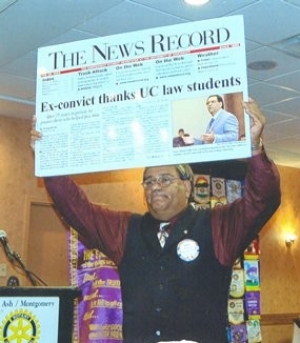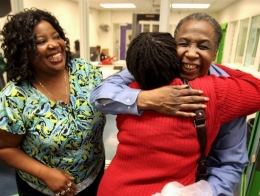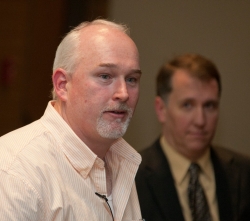The national Innocence Project works to exonerate the wrongfully convicted through post-conviction DNA testing and evidence that can conclusively prove innocence. The Ohio Innocence Project, based at the University of Cincinnati's College of Law, was founded in 2003, at a time that Ohio statistically had one of the largest prison populations without access to an Innocence Project..
As many as 20 students work full time on the project over the summer, screening hundreds of requests from prisoners, then selecting approximately six cases for complete investigation based upon the possibility of introducing new evidence to exonerate the prisoners, such as DNA testing, new witnesses or digital enhancement of old video films. During the school year, work continues on a part-time basis for class credit under the direction of Mark Godsey, OIP director, the Daniel and Judith Carmichael Professor of Law and a former federal prosecutor.
Funded entirely through private donations, the project provides the kind of legal experience unmatched in the classroom or on most jobs available to law students. Because the service is free, most clients are "poor, forgotten and have used up all legal avenues for relief," Godsey says.
UC students had their first victory in 2005 when Gary Reece walked away from prison after serving 25 years of a 75-year sentence for the rape and attempted murder of a woman in his apartment building.
In 2007, the Ohio Innocence Project was subject matter for two TV-series pilot episodes. "Court TV" featured a UC case in debuting a new series called "Justice Delayed." And a new A&E network series called "Innocence Files" featured three UC students and their work developing the ongoing case of inmate Glenn Tinney.
In April 2010, law students' successful work through the Innocence Project paved the way for groundbreaking reform in wrongful convictions when Ohio Gov. Ted Strickland signed into law Senate Bill 77, which sets statewide standards for retaining biological evidence, taking DNA in felony arrests and establishing new procedures for police lineups.
The list below, in alphabetical order, represents everyone whom the OIP helped to get released as of July 1, 20013. The date following the name is the date they greeted freedom. Click on any highlighted name to read more.




